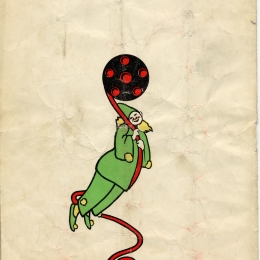art or business
The Hungarian Animation - Studios between the World Wars
Hungarian animation has been well known in international film history for over eighty years. Barely 20 years after the showing of Émilie Reynaud’s first animated film made in Paris, a whole series of Hungarian artists emerged with experimentations of “reanimating” “dead” material. Creative impulses were especially inspired by the initial arrival of Walt Disney films in Hungary at the end of the 1920s. Artists who were following along these patterns, however, had no choice but to realise that in the absence of financial resources and state of the art film laboratories, they could not compete with their colleagues in the West. Thus, unfortunately, many relinquished their cherished dream of making animations (films made with drawn images, puppets, paper cutouts, and the movement of objects) or trickfims, as they were referred to at the time.
Thankfully, however, there were also some who, in spite of the seemingly hopeless situation, continued to make films.
In 1914, István Kató-Kiszly shot his first cutout animation by the title “Zsirb Ödön”, as the first art director of the Uher Film Factory (“Black Captain / Fekete Kapitány", 1920; “The Mouse / Az Egér”, 1921). Parallel to this, in 1915, the cameraman of the Film Factory, Gusztáv Kovács, together with his brother Andor Kovács Kruppka (actor) established a film laboratory by the name of Kruppka Factory. This was later expanded to first become the Kovács and Faludi company, and then, was brought under state control to become the Rainbow Laboratory (Szivárvány Laboratórium).
The Hungarian Film Bureau (Magyar Film Iroda) was a significant animation studio, which after the war was initially renamed the News and Documentary Film Factory (Híradó és Dokumentum Filmgyár), and then much later came to be known as Mafilm II. At the end of the 20s, the Film Factory had such eminent puppet animators as György Marczincsák, who later won six Oscars and he was known in Hollywood as George Pal. János Halász (John Halas) also worked here briefly as well as István Valker who was the creator of the Polly Ági films and made circa 40 000 m of trickfilm.
The so called Jaschik School provided its students with a multifaceted education in fine and applied arts. It was this studio that, in cooperation with its animation enthusiast students (Pál Vidor, György Hegyi, and Ildikó Szilágyi), made, among others, the first version of the Hungarian folktale entitled “Little Rooster” (Kiskakas) whose script and graphic sketches will be shown at the exhibition.
Sándor Bortnyik founded the private school called the Studio (Műhely) in Budapest in 1928, whose new Bauhaus principles he had brought back to Hungary from Weimar and Vienna. This school was a gathering place for such talented artists as Győző Vásárhelyi (Victor Vasarely), Félix Kassowitz, János Halász (John Halas), György Szénásy and the three Macskássys: Gyula, János and Dezső – among others.
The Macskássy brothers emerged from this group and in collaboration with their school mates (with the exception of Vasarely) established a new animation studio by the name of Coloriton, which was the forerunner of the Pannonia (Pannónia Rajz- és Animációs Stúdió).
In the 30s, this also served as an important work space for amateur filmmakers. The Association of Amateur Motion Picture Makers (Amatőr Mozgófényképezők Egyesülete) provided a large number of talented amateur animation filmmakers (István Vásárhelyi, Lipót Zsellér, and Nándor Németh) with a break as well as opportunities to participate in international festivals.
In addition to the aforementioned artworks, pieces by a few “freelance” artists will also be on exhibit at the kArton Gallery. Visitors can also enjoy a taste of advertisement tunes from the discussed time period.
Collaborating partners: Cultural Committee of the Municipality of the Fifth District of Budapest, Hungarian National Film Archive, Hungarian Theatre Museum and Institute, the Budapest Collection of the Metropolitan Ervin Szabó Library, Moholy-Nagy University of Art and Design.

